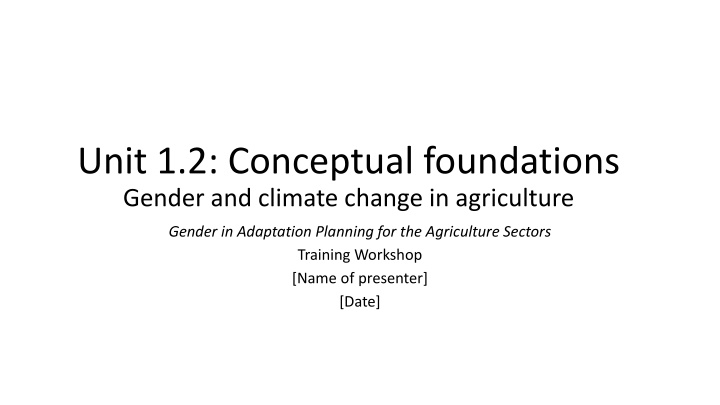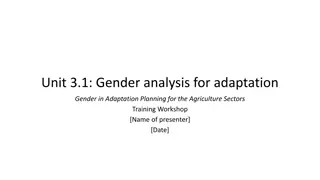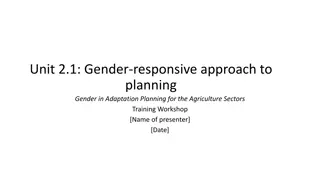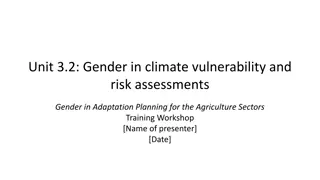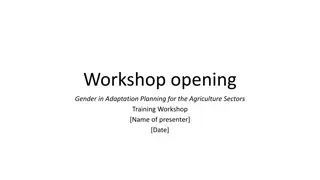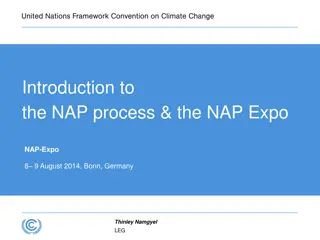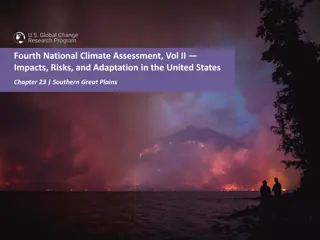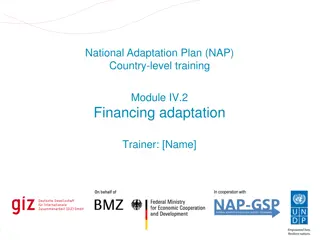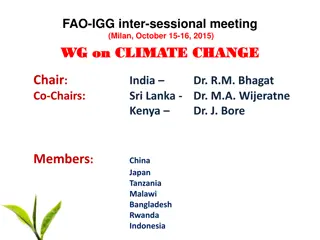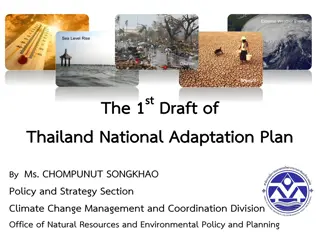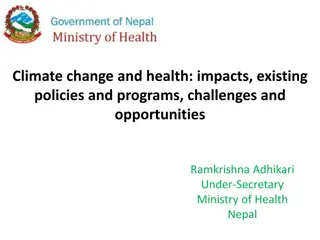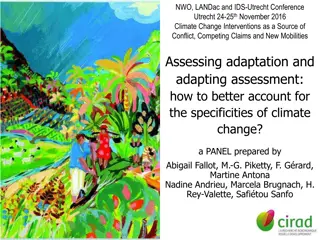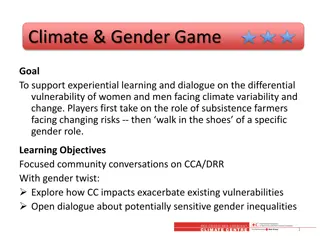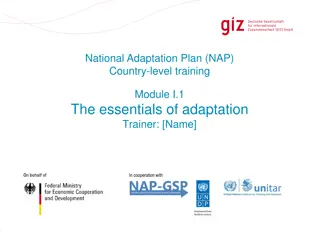Gender and Climate Change in Agriculture: Impacts and Adaptation Strategies
This workshop explores the intersection of gender and climate change in agriculture, emphasizing the importance of considering gender dynamics in adaptation planning. It covers the effects of climate change on men and women in agriculture, reasons for gender-sensitive adaptation planning, global and national policy commitments, and initiatives focusing on gender, adaptation, and agriculture coordination. The workshop also delves into climate variability, climate-smart agriculture responses, and the significance of climate change adaptation in agricultural sectors.
Download Presentation

Please find below an Image/Link to download the presentation.
The content on the website is provided AS IS for your information and personal use only. It may not be sold, licensed, or shared on other websites without obtaining consent from the author.If you encounter any issues during the download, it is possible that the publisher has removed the file from their server.
You are allowed to download the files provided on this website for personal or commercial use, subject to the condition that they are used lawfully. All files are the property of their respective owners.
The content on the website is provided AS IS for your information and personal use only. It may not be sold, licensed, or shared on other websites without obtaining consent from the author.
E N D
Presentation Transcript
Unit 1.2: Conceptual foundations Gender and climate change in agriculture Gender in Adaptation Planning for the Agriculture Sectors Training Workshop [Name of presenter] [Date]
Learning outcomes Explain Explain basic climate change and gender concepts. Identify at least 3 ways climate change may affect women/men who depend on agriculture sectors for food security, livelihoods, wellbeing. Identify Identify Identify at least 3 reasons why gender is important to consider in adaptation planning for agriculture sectors. Name Name global and national climate change and gender policy commitments. Identify Identify 1-2 initiatives/organizations, that can coordinate to work on gender, adaptation, agriculture.
Part 1: Climate change in agriculture Climate variability refers to natural climate fluctuations. With climate change, there is increased variability and unpredictability of weather and climate events and subsequent impacts on food security, rural livelihoods, and overall well- being. The Enhanced Greenhouse Effect
Responses to climate change Adaptation Mitigation Climate-smart agriculture aimed at reducing the vulnerability of natural and human systems against actual or expected climate change effects. various types, e.g. anticipatory and reactive, private and public, and autonomous and planned. examples include raising river or coastal dikes, the substitution of more temperature shock resistant plants for sensitive ones, etc. addresses the cause of climate change including technological change and substitution that reduces and/or removes net greenhouse gas emissions or emissions per unit of output. implementing policies to reduce greenhouse gas emissions in the atmosphere and enhance sinks. integrates the three dimensions of sustainable development (economic, social and environmental) by jointly addressing food security and climate challenges. composed of three main pillars: (1) sustainably increasing agricultural productivity and incomes; (2) adapting and building resilience to climate change; and (3) reducing and/or removing greenhouse gas emissions, where possible
Why climate change adaptation in agriculture? Agriculture sectors highly affected by climate change. Agriculture sectors = primary contributor to total economic output, employment in many countries. Nearly 80 % of world s poor live in rural areas. Most depend on agriculture for livelihoods. CC adaptation in agriculture sectors among priorities in many national climate plans. Adaptation planning for agriculture sectors must be targeted, context-specific to be effective.
What can climate change adaptation do for agriculture? Adaptation can increase range of ways in which farmers and ecosystems can cope. Adaptation strategies in agriculture based on combination of actions & systemic changes. Time span of adaptation options can vary considerably.
Part 2: What is gender and why is it important to adaptation in agriculture? Gender refers to socially constructed roles, relations, behaviours, and expectations of women, men, boys and girls. Unequal access and inequitable decision-making power contribute to the persistence of a gender gap in agricultural productivity
Why is gender important to adaptation in agriculture? CC can impact different people differently; exacerbate gender, age inequalities in agriculture. Men/women may be differently vulnerable to CC impacts (age, socio- economic strata, ethnicity, caste, etc.). Institutions that shape adaptation responses may reinforce existing inequalities. Adaptation options depend on institutional and behavioural changes built on analysis. More equal HH, community gender relations = better agricultural, development outcomes. Addressing gender issues can improve adaptation policymaking and programming.
Global gender commitments Paris Agreement Example: Nationally Determined Contributions (NDCs) Nepal = signatory to 23 human rights treaties, international human rights instruments that support GE, e.g. CEDAW, Beijing Platform for Action (BPfA), SDGs, UN Security Council Resolutions 1325 and 1820, etc. Lima Programme of Work UNFCCC Gender Action Plan Other, e.g. Agenda 2030/Sustainable Development Goals
National gender commitments Most countries have gender policies, strategies. Adaptation planning should align with CC and Ag. policies and plans including those that mainstream gender and those focused specifically on gender. Legislation around inheritance, land title, resource use relevant to adaptation Examples: Uganda s National Climate Change Policy mainstreams gender and human rights. Vietnam s National Climate Change Strategy makes gender a priority.
